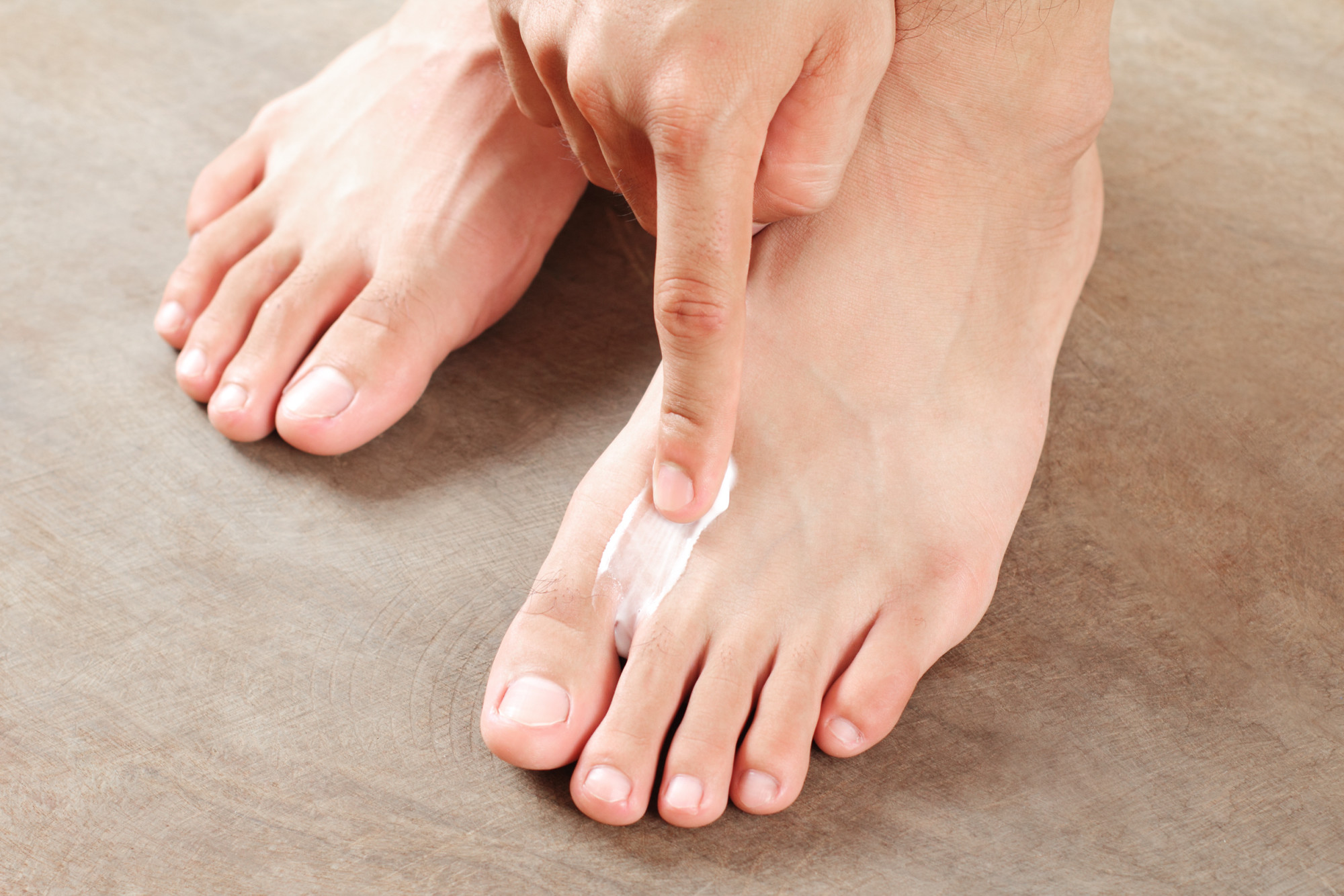
The Symptoms of Athlete’s Foot

The name is a little misleading. Athlete’s foot commonly affects athletes because it thrives in damp environments and closed-toe shoes, but anyone can catch this infection. It’s also contagious so every person is at risk if they don’t take precautions.
While the fungal infection can be itchy, annoying, and unsightly to look at, athlete’s foot is not dangerous. When it comes to treatments, there are several options to keep symptoms at bay.
Maybe you suspect you have athlete’s foot but are unsure about the symptoms. Or you know you have it but you are at a loss for what to do about it. Either way, we can help!
Keep reading to find out everything about athlete’s foot, its symptoms, and treatment options.
What Is Athlete’s Foot?
Athlete’s foot, also called tinea pedis, is a fungal infection that typically develops between the toes, spreading to the surrounding foot tissue and toenails.
It is common among athletes who spend a lot of time in tight-fitting shoes and damp locker rooms, as this is where the fungal infection thrives.
Because it’s a contagious condition, people can catch athlete’s foot through direct contact with an infected person, through infected clothing or towels, or by touching any surfaces contaminated by the fungus.
Symptoms of Athlete’s Foot
Like other similar fungal infections like jock itch and ringworm, athlete’s foot presents with a range of symptoms. There is more than one type of athlete’s foot. The symptoms will vary depending on what kind you have.
Among the possible symptoms are:
- Scaly, cracked, or peeling skin between the toes
- Intense itchiness, especially after removing shoes and socks
- Inflamed skin that appears reddish, purplish, or grayish, depending on the color of your skin
- Burning or stinging in the area
- Blisters
- Scaly, dry skin that starts from the bottom of the foot and extends up the sides.
- Toenails that look thick, discolored, or crumbly
- Toenails pulling away from the nail bed
Who Is at Risk of Catching Athlete’s Foot?
Anyone can get athlete’s foot, but certain things can increase your risk of catching it. Some increased risk factors include:
High-Risk Locations
Certain spaces put you at higher risk for contracting athlete’s foot—the warmer and the wetter, the higher the risk. Be cautious in such places as locker rooms, showers, swimming pools, saunas, and steam rooms.
Shoe Habits
People who frequently wear enclosed footwear, and don’t allow their time to dry their feet out are at risk for athlete’s foot. Among the most at risk are athletes, who sweat in their shoes, creating the damp environments that the fungus loves.
Other people such as miners, soldiers, and others who wear shoes or boots for long periods are also at risk.
Sharing Certain Items
Avoid sharing towels, socks, or shoes with others. You never know if someone has athlete’s foot, so sharing could increase your risk of catching it.
Existing Injuries
If you have an open wound or injury on your foot (or feet), keep your feet covered or in sandals. Existing injuries could increase your risk of catching the fungus.
How to Decrease Your Risk
There are some things you can do to help you avoid getting athlete’s foot or to prevent spreading it to others. Here are some tips:
Let your feet breathe. As often as possible, remove footwear and socks, and wear sandals instead. This allows you to limit dampness and lets your feet air out.
Keep good hygiene habits. Keep your body clean, but pay special attention to cleaning your feet with warm, soapy water, taking care to rinse and dry them well. Apply a medicated foot powder.
Change your socks often. Your socks need to be changed at least once per day (or more often if you have really sweaty feet). Try using moisture-wiring socks made from cotton—they will keep your feet dryer than with nylon socks.
Avoid being barefoot in public spaces. When using a public pool, public shower, or locker room, wear sandals.
Alternate your shoes. Change your shoes from one day to the next. This gives time for your shoes to air out and dry out after using them.
If you have athlete’s foot, be aware of your habits. Don’t share shoes, towels, or socks with others who live with you. Avoid walking around barefoot in the house.
Treatments For Athlete’s Foot
Athlete’s foot is not likely to go away on its own. The good news is that is treatable with pharmacy OTC (over-the-counter) topical antifungal medications in the form of creams, sprays, and dry powders. A foot treatment may take a few weeks to work and after that, may serve as a preventative treatment.
Antifungal medications differ in the way that they work, so you may need to try a few different treatments to find one that works for you. There are several options, but here are some of the most common.
- Terbinafine hydrochloride (Lamisil)
- Miconazole
- Clotrimazole
What if It Keeps Coming Back?
It’s common for athlete’s foot to come back after treatment. For your best chances to prevent the reoccurrence, make sure you continue your medications for the recommended time. Don’t stop early even if the infection looks better.
If your case of athlete’s foot comes back, try a different treatment. Don’t use the same product again.
Most of all, practice good foot hygiene. Even after successfully getting rid of an athlete’s foot infection, if you return to the same damp places and foot and shoe habits, you are likely to catch a new infection.
If the infection continues to get worse, along with swelling or pain, you should contact your doctor.
Say Goodbye to Athlete’s Foot
Now that you know all about athlete’s foot, you can notice the signs, take action and get it treated. If you are in the high-risk group, you can also take preventative action.
Kiwi Drug is an international online pharmacy. Consult our comprehensive online product catalog to get the medicine necessary to treat a wide range of ailments, including athlete’s foot. We offer many medications, drugs, and general healthcare items at the best prices, shipped to you with efficient service and express delivery.
At Kiwi Drug, customer satisfaction is always our top priority.
Related Posts

